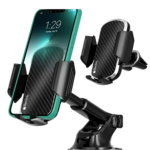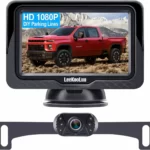When connected to a stereo system that uses a cassette player, the cassette converter expands the system’s playback capabilities. This is helpful for cars that don’t have CD players or cassette aux ports.
With the use of a cassette tape adapter, modern portable audio players can be used in traditional cassette decks, a feature that was patented on March 29, 1988. Cassette tape adapters were initially developed to allow portable CD players to be used with car stereos that only had cassette players; however, they have since found widespread adoption among portable media players in vehicles that already had CD players. These days, it’s largely used in cars that don’t have cassette aux inputs on their stereos. FM transmitters are ideal for automobiles having AM/FM stereos but no cassette player.
Standard cassette adapters have a single-sided writing tape head (equivalent to the tape deck’s recording head) that is wired to a stereo minijack connector. The electrical signal is transmitted through the cord to the device’s output (or headphones) port, and the head then converts the signal into a magnetic one. The tape deck’s reading head picks up the magnetic signal, converts it back into an electrical signal, and sends it to the amplification system. Most cassette converters only function in one direction since the head only has one polarity. On the other hand, some cassette adapters feature reversible heads on the cassette end. To prevent the deck from going into auto-reverse, the cassette contains one-way gears that mimic the tape’s movement from reel to reel.
A more modern adaptor is an MP3 player that mimics the form factor of a cassette tape; this sort of player can be used on its own with headphones or put into a cassette player to be controlled via the device’s remote. These often feature a dual-directional head for use in either direction.
Cassette tape Bluetooth adapters are yet another option for cassette players. It looks like a regular cassette tape, but it actually features a Bluetooth audio receiver module, a simple power source that allows charging and power, and a tiny battery. If the cassette player is turned on, it may begin functioning and turn off when the tape is removed. They may flip a switch beneath their skull. Some of them might even be able to function as standalone adapters, with their own power button and everything. To charge, plug it into an external power source. The controls are straightforward, much like those of the classic cassette-shaped MP3 player. A Bluetooth-enabled device, such as a smartphone or laptop, can stream music to a cassette player or a cassette tape Bluetooth player by simply being placed into the cassette player and set to play.
FM transmitters are widely used in place of cassette adapters. These gadgets, which usually transmit electrical signals from a device to a nearby FM tuner via radio waves, require external power and operate on an underused FM frequency. It is generally agreed that the cassette adapter for car is superior since it is less susceptible to interference.
- How does a cassette adapter for car function?
- Is there a reason the tape deck doesn’t try to rewind?
- Is it possible to buy a tape player today?
How does a cassette adapter for car function?
A normal cassette adapter for car uses a writing tape head that can only be used on one side. The analogy here is to the tape deck’s recording head. Most often, a corded stereo mini-jack is attached to this. The other end of this cable is plugged into the audio output jack of the external device. When a song is played through a linked audio device, the electrical signals are transformed into a magnetic signal by the head. The tape deck’s reading head picks up this magnetic signal inside the vehicle.
Cassette adaptors didn’t have a magnetic reel like regular cassette tapes. Instead of using an exposed magnetic tape medium, a transmitting head was placed in the spot where the tape would normally reside. The magnetic signal is read by the cassette deck’s reading head, which then converts it to an electrical signal (just like it would with ordinary cassette tape) that is amplified by the sound system. Most automobile cassette adapters are “one-way only” due to their design. Cassette tapes of yore had a magnetic reel that could be turned around after the tape ran out.
Is there a reason the tape deck doesn’t try to rewind?
When the end of a tape is reached, most tape decks will either pause playback or reverse playback, depending on the model. People who have listened to music on cassette tapes are likely familiar with the loud clunk that occurs when the tape runs out, followed by the tape deck reversing and playing the other side of the tape. Since there is no tape in a cassette tape adapter, the unit must be fooled such that playback is uninterrupted and in either direction. There’s a chance that the tape deck won’t play at all or will become stuck in an endless loop of playing backward if this mechanism isn’t present.
To get around this problem, high-quality tape adapters typically use a set of gears and a wheel of some description. The technology accurately mimics the behavior of a tape that plays indefinitely. If your cassette tape adapter isn’t working, your tape deck may have a faulty gear mechanism. This is especially true if your tape deck keeps trying to play the cassette backward.
Is it possible to buy a tape player today?
Those of you who have pondered whether or not cassette players are still available in stores will be pleased to know that they are. There has been something of a resurgence in the popularity of these once-obscure devices, though you might have trouble tracking one down at your neighborhood electronics retailer. Cassette tapes look to be seeing a renaissance in cult popularity, paralleling the growth of the vinyl scene.



